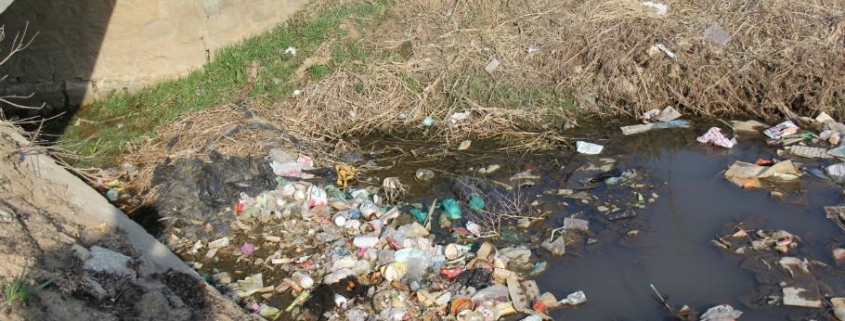The harm of rural solid waste
1. Polluted water source
If the solid waste flows into the local rivers and lakes, it will often bring a lot of harmful substances in the waste into the water body, which will do harm to the growth of various aquatic animals and plants, and also cause pollution to the water source; the seepage liquid generated by the solid waste accumulation is more serious, it will penetrate into the underground water through the soil, polluting people’s drinking and domestic water. In addition, a large number of aerobic putrefactive organic material flows into the river will often make the water eutrophication, lead to the crazy growth of some microorganisms, resulting in the imbalance of biological structure; and some wastes such as straw directly thrown into the river will often lead to river blockage. The polluted atmosphere often contains a large amount of fly ash in the solid waste, and these fly ash and the small dust particles in the waste will often diffuse into the atmosphere; some organic solid waste will degrade and form biogas under the condition of appropriate humidity, which will have a great impact on the growth of nearby plants, and some specific chemical toxic waste will also under certain conditions In chemical reaction, the resulting toxic gas diffuses into the atmosphere with the wind, which poses a threat to the health of nearby residents. At last, a large number of smoke and harmful gases will be produced when burning it in memory, which will seriously affect the air quality in rural areas.
1.1 polluted land
If we don’t treat solid waste in a unified and scientific way and let it accumulate, after a long period of sun and rain, the toxic liquid produced by it will permeate into the soil, causing damage to the soil. Many wastes that are difficult to be classified by nature in a short period of time will remain in the soil for a long time, seriously affecting the structure and function of the land, and even killing the micro in the soil At present, many farmers are used to burning straw,
The formation of high temperature by incineration will do great harm to the surface microorganisms, which will reduce the fertility of the soil and destroy the balance of the biological system in the soil.
2. Treatment of rural solid waste
2.1 composting treatment
For the organic solid waste, we often go to the composting treatment method, which refers to the artificial control of the solid waste stacking environment, under certain temperature, humidity and ventilation conditions, the use of bacteria and fungi for fermentation, composting is a kind of artificial decomposition method. Compost is usually a loose brown substance with soil texture. It looks like humus soil. Therefore, some people call it humus soil. Compost is a very good soil conditioner, which is usually used for straw or livestock waste.
2.2 centralized Incineration
It has been used for a hundred years to concentrate solid waste for unified incineration treatment, and there is a great development in both incineration means and incineration equipment. The incineration here refers to the concentration of solid waste into the incinerator to burn completely, and then use some equipment to convert the energy released in the combustion process into electrical energy. The smoke generated in the incineration process can be discharged after purification and treatment, and the residue after incineration can be used in other places. The incineration capacity of rural solid waste is relatively large, and the secondary utilization of the waste can be realized through the electric energy generated by the incineration of solid waste. Centralized incineration is one of the most commonly used methods in the treatment of rural solid waste in China, which also exists in many foreign countries. However, it must be noted that some areas with poor equipment conditions will pollute the atmosphere if they cannot effectively purify the incineration flue gas.
2.3. Landfill
The landfill technology of rural solid waste is relatively simple, and its cost is lower. The general process of landfill treatment mainly includes classifying solid wastes and sending them to the conveyor. Before this step, try to clean up the wastes that can be reused, such as waste paper and plastic, and transport the wastes of different sizes and types to different machines, dry and grind the mail wastes after fermentation, and then put these wastes into the conveyor The fertilizer of the machine is well packed; after other wastes are crushed and ground, they are mixed with clay to make hollow bricks for reuse.
CONTACT US
Address: No. 22 Binhe Road, Luoyang City, Henan Province, China
Tel: +86 379 64318689
Cell: +86 18237958898
E-mail:sales@lcdri.com
OUR PERSPECTIVE
Technology innovation
Energy & resource saving
Environment protection
Search
OFFICE HOURS
Mon-Fri: 8:30-17:30



